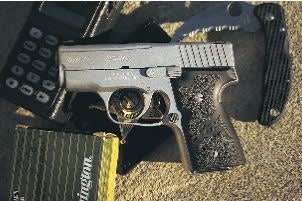For example, one agency I know of uses a drill where its officers run up to a table where they find a semi-automatic pistol in pieces. The gun must be assembled, loaded and then fired on multiple targets (which are facing them this whole time) in a given time frame.
When I was asked to do this, I ran to the table, pulled my back-up gun and solved the problem. I was told this was not "allowed" and was asked to do it again. Once the drill was restarted, I turned and ran away, zigzagging, as I went.
When I was asked why I had done this I responded "Well, zigzagging makes you harder to hit." This is not what the range officer wanted to hear. He wanted to know why I did not put the pistol together and fire. To this I responded, "If I am ever in a gunfight, with multiple suspects and my gun comes apart, I am going to use my back-up gun. If I don't have a back-up, I am going to run away, zigzagging as I go because that will make me harder to hit."
I realize the disassembled gun drill was probably fun to do, and there is nothing wrong with training being fun. But at the same time, training must be done to bring about a needed goal, which in this case is winning. Putting together a gun under fire does not pass the "Three S Test," and it does not follow the SIG principle. Does carrying a second gun pass the "Three S Test?" You bet. It's also a perfect example of following the SIG principle.
To win on the streets, you must be aware, willing, have the best equipment possible, know how to use it, seek all the training you can, know how to use that training under stress, and know what is relevant and what is B.S. You need to keep it simple, and that is the SIG principle.












